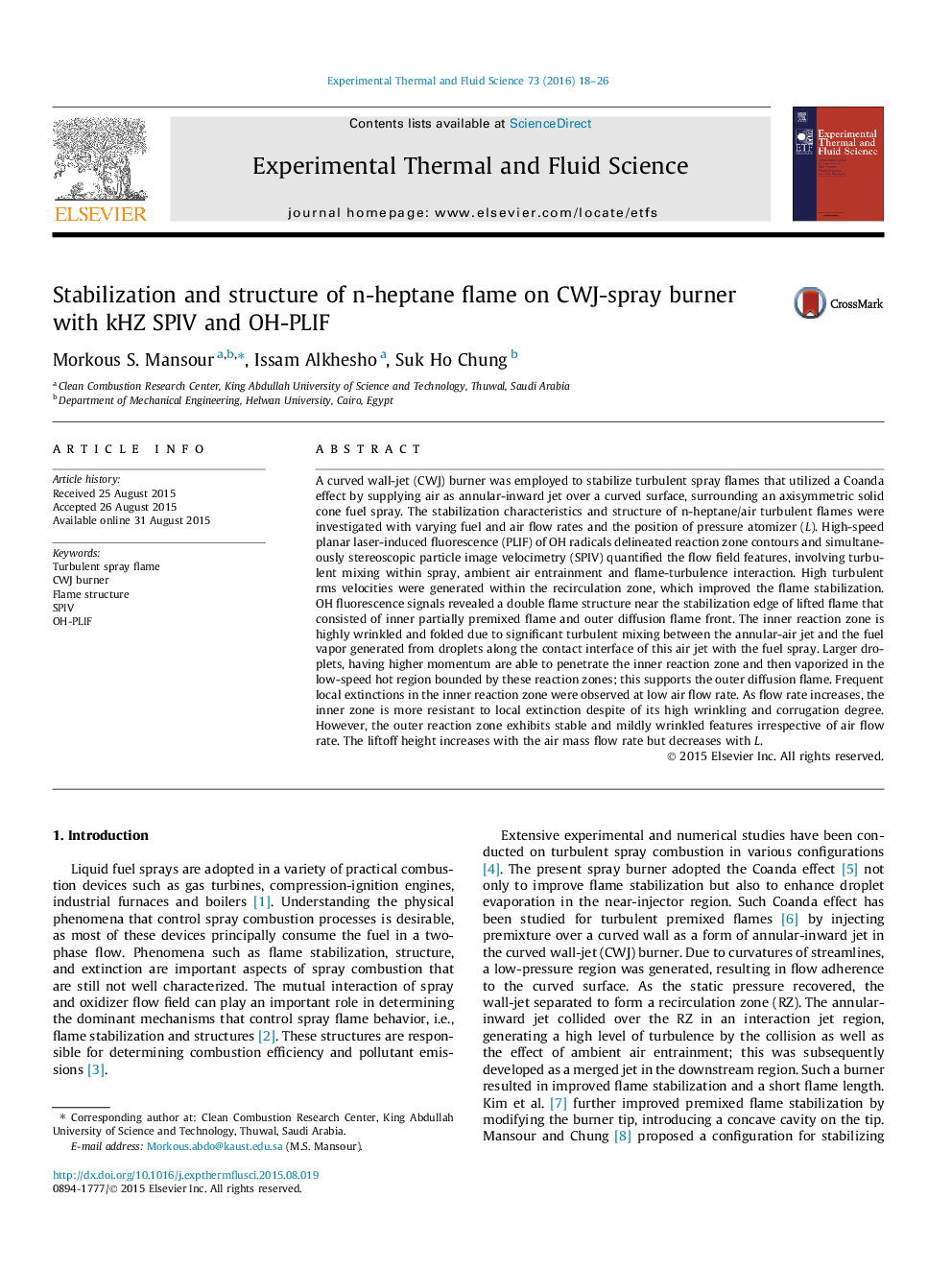| کد مقاله | کد نشریه | سال انتشار | مقاله انگلیسی | نسخه تمام متن |
|---|---|---|---|---|
| 651061 | 1457403 | 2016 | 9 صفحه PDF | دانلود رایگان |

• Curved wall-jet (CWJ) spray burner is proposed to stabilize turbulent spray flames.
• Very compact spray flames can be realized with the curved wall-jet of air.
• The liftoff height increases with the air flow rate but decreases with nozzle position.
• OH fluorescence revealed a double flame structure at the stabilization edge of flames.
• The inner reaction zone is highly wrinkled while the outer one exhibits stable features.
A curved wall-jet (CWJ) burner was employed to stabilize turbulent spray flames that utilized a Coanda effect by supplying air as annular-inward jet over a curved surface, surrounding an axisymmetric solid cone fuel spray. The stabilization characteristics and structure of n-heptane/air turbulent flames were investigated with varying fuel and air flow rates and the position of pressure atomizer (L). High-speed planar laser-induced fluorescence (PLIF) of OH radicals delineated reaction zone contours and simultaneously stereoscopic particle image velocimetry (SPIV) quantified the flow field features, involving turbulent mixing within spray, ambient air entrainment and flame-turbulence interaction. High turbulent rms velocities were generated within the recirculation zone, which improved the flame stabilization. OH fluorescence signals revealed a double flame structure near the stabilization edge of lifted flame that consisted of inner partially premixed flame and outer diffusion flame front. The inner reaction zone is highly wrinkled and folded due to significant turbulent mixing between the annular-air jet and the fuel vapor generated from droplets along the contact interface of this air jet with the fuel spray. Larger droplets, having higher momentum are able to penetrate the inner reaction zone and then vaporized in the low-speed hot region bounded by these reaction zones; this supports the outer diffusion flame. Frequent local extinctions in the inner reaction zone were observed at low air flow rate. As flow rate increases, the inner zone is more resistant to local extinction despite of its high wrinkling and corrugation degree. However, the outer reaction zone exhibits stable and mildly wrinkled features irrespective of air flow rate. The liftoff height increases with the air mass flow rate but decreases with L.
Journal: Experimental Thermal and Fluid Science - Volume 73, May 2016, Pages 18–26